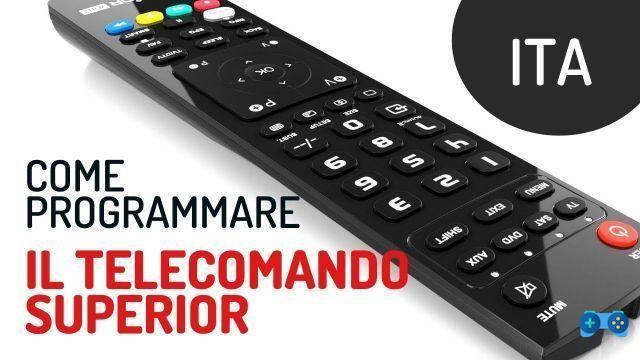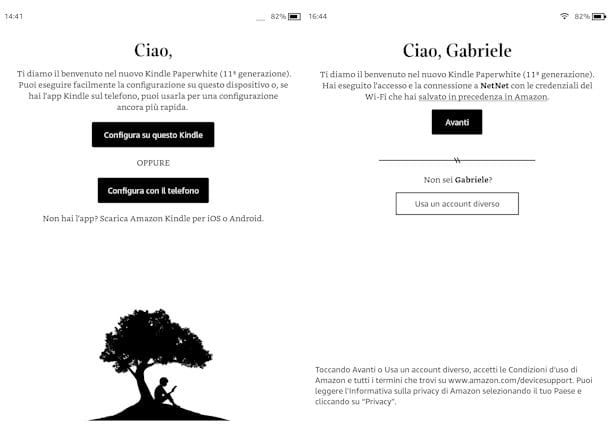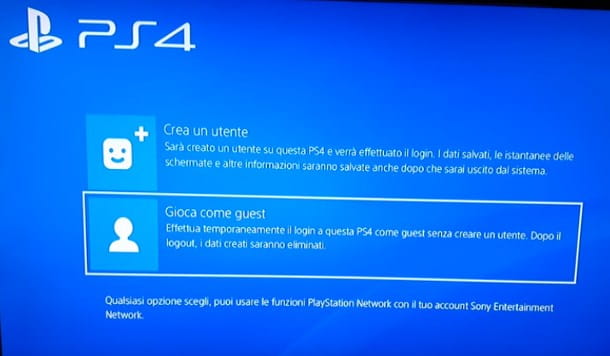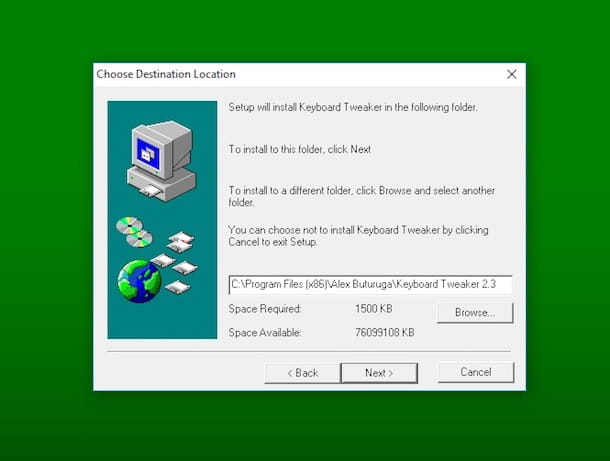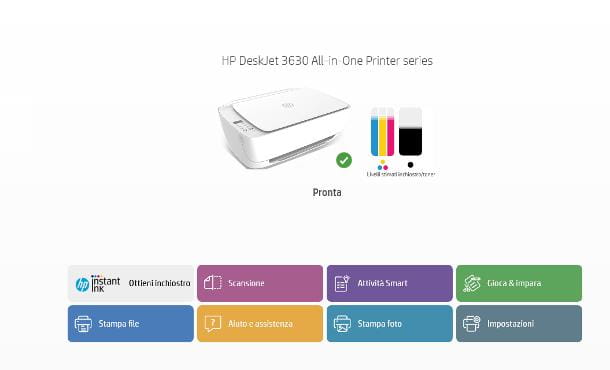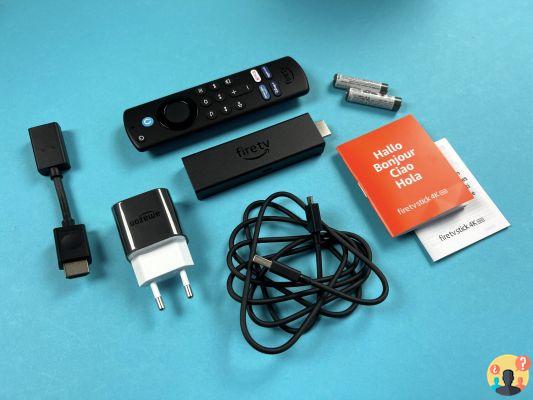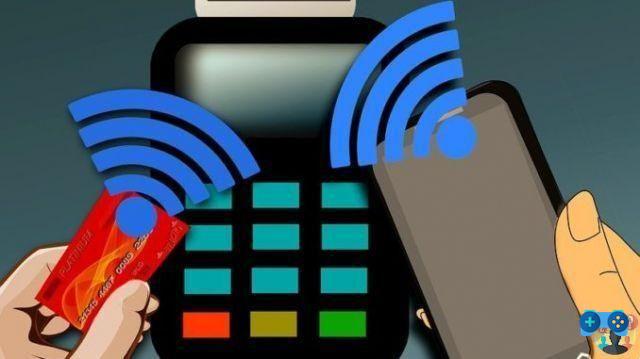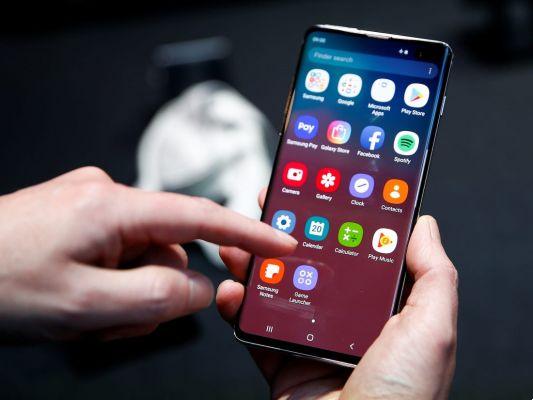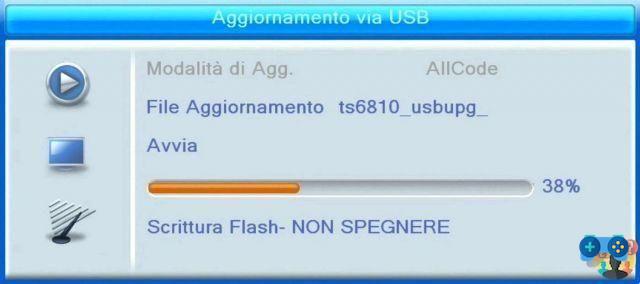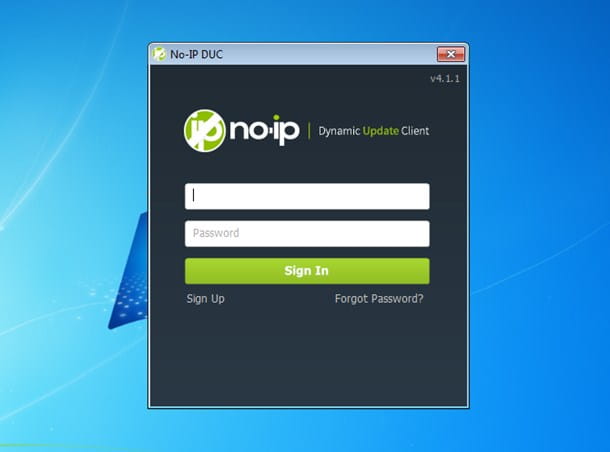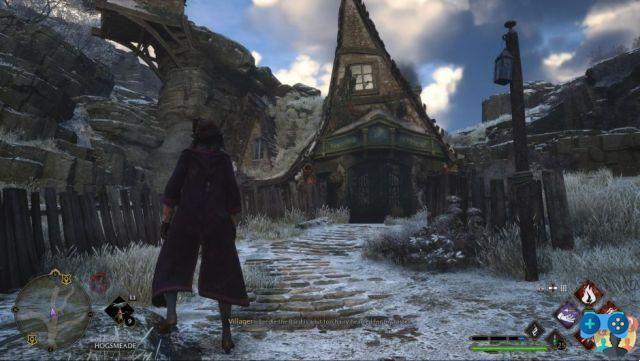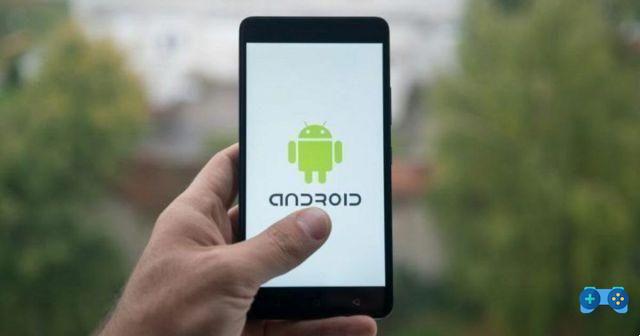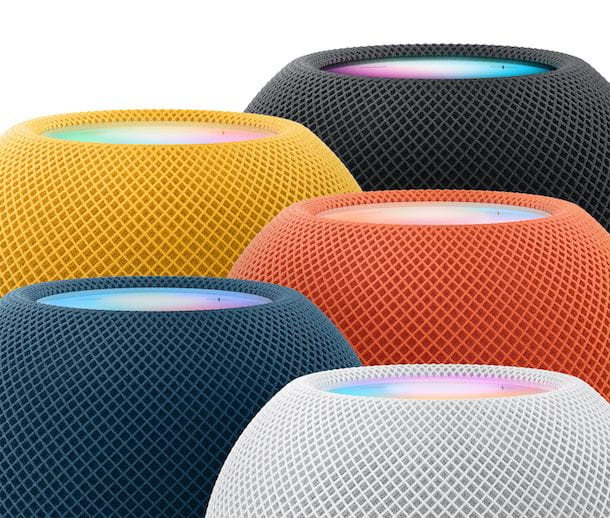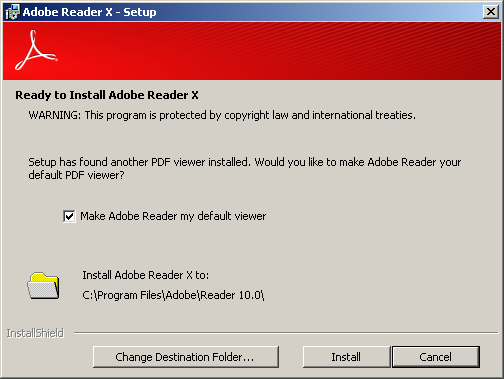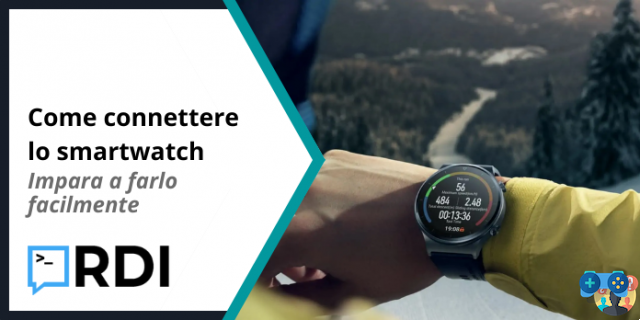Recently, logging into Windows 10, you found yourself in a rather unpleasant situation: desktop icons suddenly disappeared and show no sign of reappearing even after restarting the computer. I know, you're toying with the idea of getting on the phone and asking your geek friend to fix this for you, but you'd rather do it yourself.
Well, I'm happy to announce that your wish has been fulfilled, because you're in the right place, at a time that couldn't be better: in the following lines, in fact, I'll explain how to restore desktop icons windows 10 using all the tools included in the famous Microsoft operating system. Don't worry, you don't need to make any particular changes or unravel complex manual commands: the methods illustrated are very simple and perfectly within the reach of those who, like you, know very little about technology!
Index
- Activate the display of icons on the desktop
- Restore desktop icons
- Exit tablet mode
- Other useful solutions
Activate the display of icons on the desktop
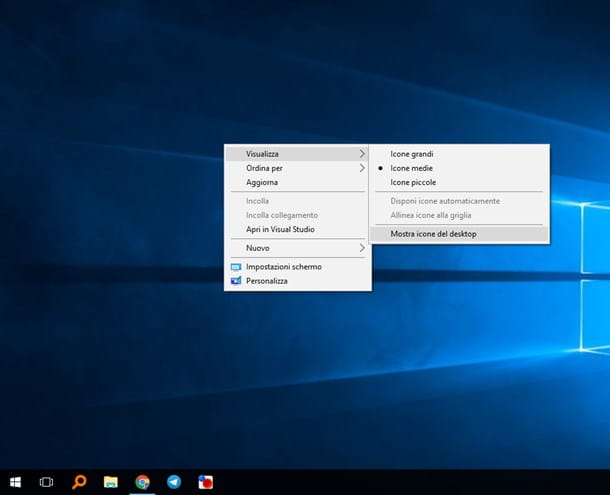
You may never have realized it, but Windows has a built-in feature to inhibit the display of icons on the desktop that is extremely simple to use! Therefore, before going ahead and relying on slightly more complex solutions, I advise you to check that this feature has not been enabled, perhaps by mistake.
How? Very simple: first, bring yourself on desktop with of Windows 10, then do click destroy with the mouse on an empty point of the same to access the related context menu and move the mouse over the item Immagine.
Pay close attention to the lower part of the second menu that is shown on the screen and identify the item Show desktop icons: If there is no check mark next to it, it means that the desktop icons have been hidden this way.
If this is your case, all you have to do is click on the aforementioned item to reactivate the display of the icons: if you do not immediately get the desired result, try pressing the button F5 of the keyboard, or to call up the again context menu of the desktop and, from there, select the entry Update. Easier said than done, don't you think?
Restore desktop icons
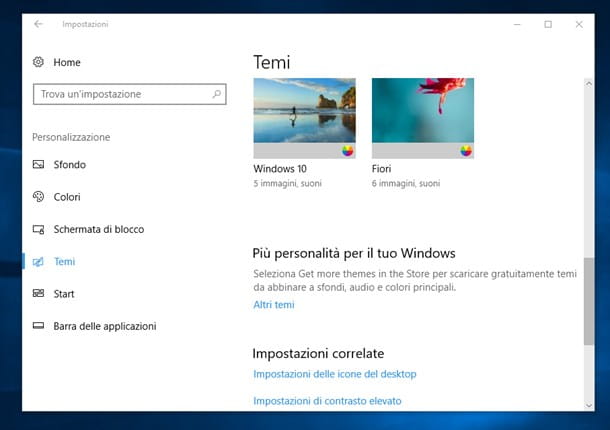
Lately you have noticed the disappearance of icons related to Trash can, What PC or to some of your favorite programs and you just don't know how to restore them? This is precisely the section of the tutorial where you can find the solution to your problem.
To re-enable the display of so-called system icons (Network, user folder, This PC, etc.) on the desktop, first do click destroy on an empty spot of the latter and select the item Customize from the proposed context menu. Alternatively, you can get the same result by clicking on the button Home (the flag-shaped button in the lower left corner of the screen), then on the button (I.e. located on the left side of the menu that opens and, subsequently, on the item or icon Customization.
At this point, clicca sulla voce Temi located on the left, scroll down the window until you reach the item Desktop icon settings and click on it. Once this is done, put the check mark in the boxes relating to the icons you want to display (Computer, Recycle Bin, User Files, Control Panel e Network), click on the buttons Apply e OK and the changes will be applied instantly.
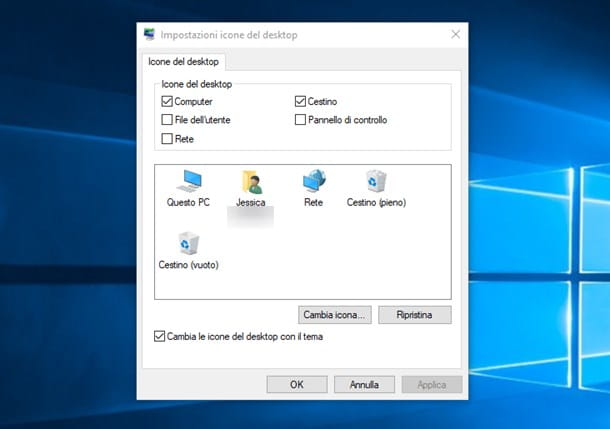
If you want to add (or restore) the icons of the programs you use most often to your desktop, you can do the following: open the menu Home or the Start Screen of Windows 10, identify the application for which you intend to create a new shortcut (you may need to access the folder in which it is contained), then "grab" its icon with the mouse and drag it on an empty spot on the desktop.
Exit tablet mode
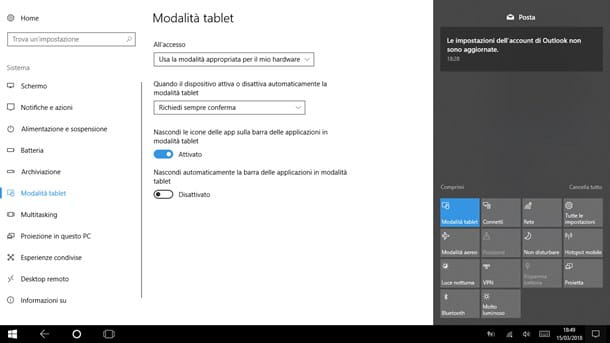
Another possible cause of the icons disappearing from the Windows 10 desktop is the activation of the tablet mode: in simple terms, it is a Windows 10 interface adapted for use with touch-screen devices, which does not include the classic desktop, but a series of large buttons placed within a fully expanded Start screen screen, known by the name of Start Screen.
Did I just describe the situation you are in? Don't worry, disabling Windows 10 tablet mode is very simple: first, access the notification area by clicking on the icon in the shape of comic placed in the corner lower right of the screen (next to the system clock, just to be clear), then presses the button Tablet mode placed at the bottom to restore the desktop and its icons.
If you want to prevent your device from activating tablet mode by itself (e.g. when you detach its tablet part from the keyboard), access the menu Start/Start Screen, pigia sul pulsating (I.e. resident on the left, select the button System from the proposed panel, then the voice Tablet mode (you can find it in the left part of the window, if it is maximized) and set the option first Use desktop mode in the drop-down menu On access and then the option Do not ask for confirmation and do not change modes in the drop-down menu When my device turns tablet mode on or off automatically.
Other useful solutions
Did none of the above solutions work? Your desktop icons have not disappeared but displayed incorrectly, perhaps with blurry icons or, even worse, in the shape of a white sheet? Then the problem could lie elsewhere: below, I'm going to show you a series of solutions which, most likely, can restore the correct display of the icons on your PC desktop.
The only recommendation I have for you, before starting, is to proceed by trial and error and follow the procedures in the exact order in which they are listed.
Regenerate the icon cache
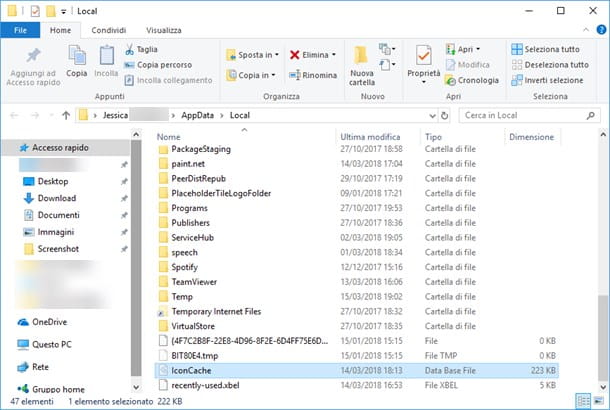
To speed up the loading of the images linked to each icon, Windows 10 keeps a small copy of their previews in a specific file, which is called file icon cache.
It may happen that, over time, the icon cache is somehow damaged, leading as a direct consequence to a distortion in the icons or the complete lack of them: it is in the latter case, in particular, that symbols are displayed on the desktop in the form of white sheets.
To work around this problem, you can regenerate the icon cache intervening in the following way: open a window of File Explorer by clicking on the yellow folder icon located in the bottom bar of Windows, click on the item Immagine placed at the top and then on the button Options.
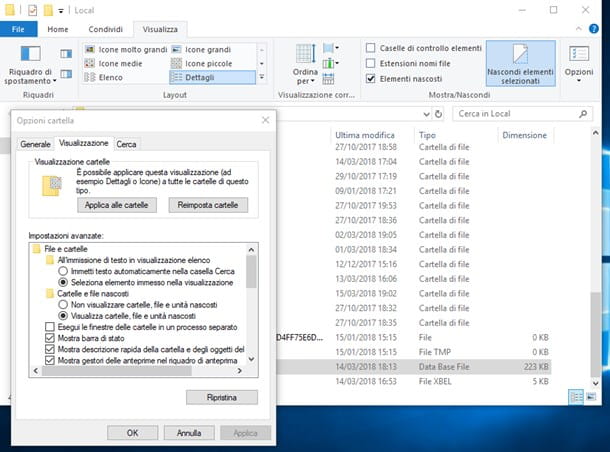
At this point, click on the tab viewing in the new window that appears on the screen, place the check mark next to the item View hidden folders, files and drives, remove it from the box Hide protected system files (recommended)click on your button Yes to confirm the will to continue and then on the button OK.
Once this operation is completed, press the key combination Win + R, type the command % localappdata% in the proposed panel, press the key Submit keyboard, identifies the file IconCache o IconCache.db ed delete it, dopodiche restart your computer: Icons should be like new again!
Reset system files
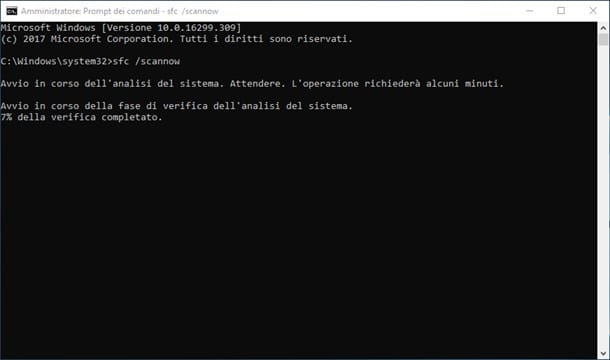
Did the previous solution not have the desired effect? You can make another attempt to "fix icons" through the utility sfc of Windows: if you had never heard of it, sfc is a command line executable program that allows you to analyze the files necessary for the correct functioning of Windows and, if necessary, restore them automatically.
To proceed, open the menu Start/Start Screen by clicking on the Start button located in the lower right corner of the screen, select the folder Windows tools, do click destroy on the button Command Prompt, select the voice More> Run as administrator from the proposed context menu and then press the button Yes.
Once the prompt opens, type the command in it sfc / scannow followed by pressing the key Submit. Then wait for the scan and fix to complete, then restart your computer and the icons should return to their original appearance.
Go back to a previous restore point
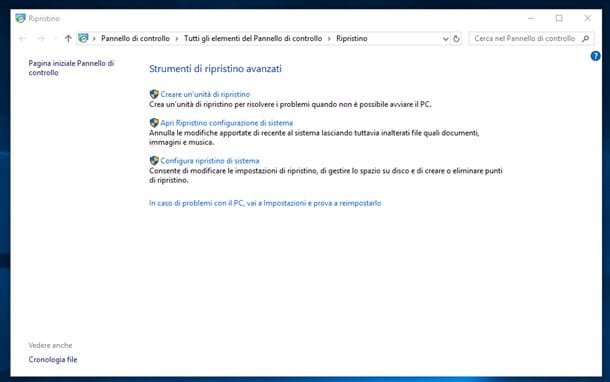
Have you tried everything, absolutely everything I explained to you above, but the icons on your desktop just don't want to go back to normal? Then, as a last resort, I recommend that you roll your computer back to a previous state using the Windows System Restore.
This Windows feature, in particular, allows you to restore the system to a previous date: in this way, all the settings and customizations applied after the chosen date, as well as the new programs installed, will be lost. However, personal files created after the date you return your computer will remain intact.
To proceed and return Windows 10 to a previous state, press on Cortana search bar, type the word inside restorationclick on your button Restoration and select the item Open System Restore resident in the new window that opens on the desktop.
Once this is done, click on the button NEXT, put the check mark next to the item Choose a different restore point, click the button again NEXT, put the check mark next to the item Show more restore points, then select the restore point created on the date immediately before the occurrence of your problem with the icons from the proposed list. If you wish, you can know in advance the programs that may stop working by pressing the button Look for affected programs.
If this procedure did not succeed either Restore Windows 10 Desktop Icons, then you may need an even more drastic solution, which could be the hard reset of the PC. In this way, you will have the possibility to restore the operating system to its initial state, exactly as if you had just installed it, with the opportunity to keep your personal files intact: don't worry, it is a very simple procedure, which I specifically explained in my guide on how to reset Windows 10.
Before proceeding, be aware that the application of the procedure just mentioned involves the total loss of all settings, programs and drivers installed on your computer.
Deprecated: Automatic conversion of false to array is deprecated in /home/soultricks.com/htdocs/php/post.php on line 606




